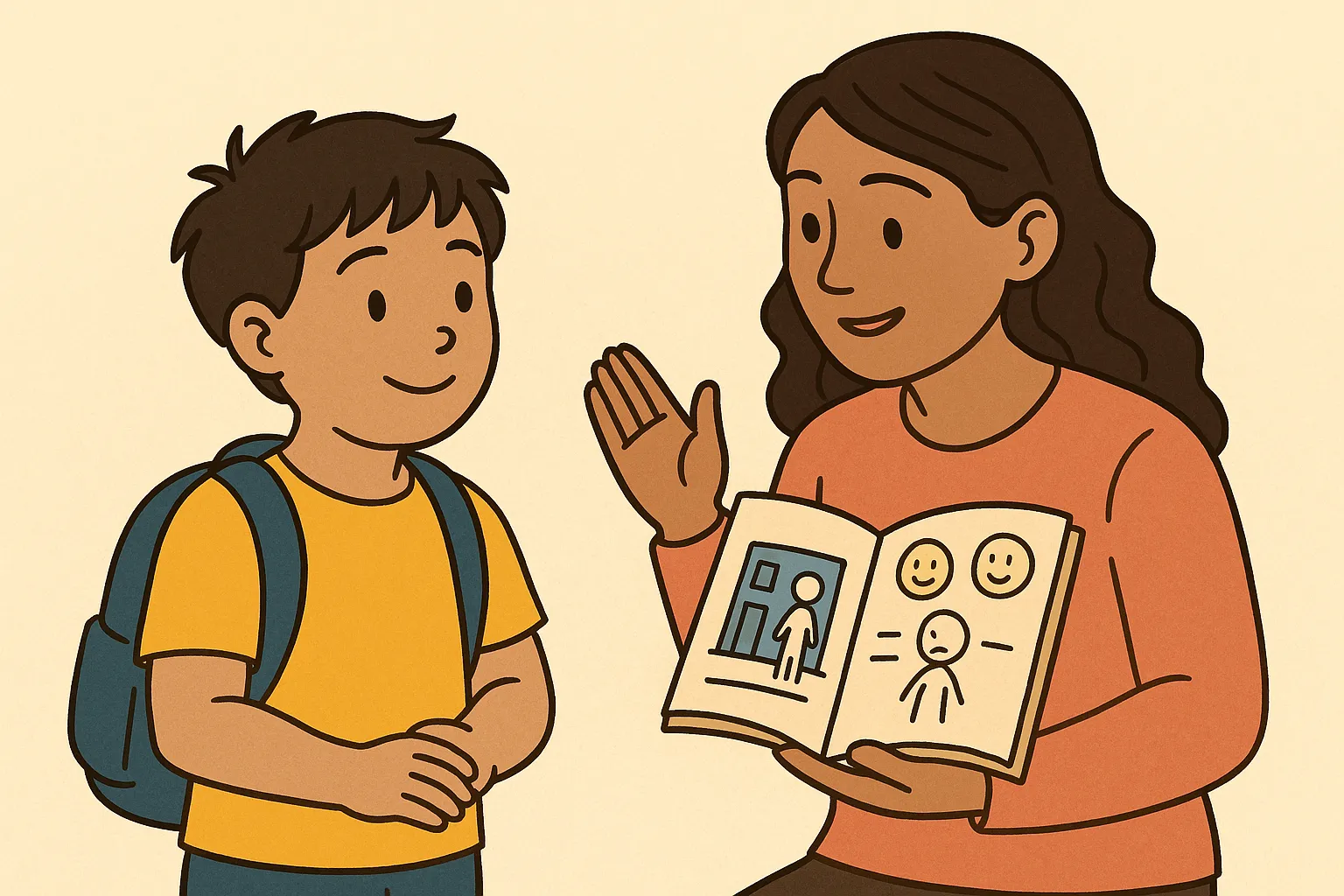What Are Social Stories and How Can They Help?

What Are Social Stories and How Can They Help?
If you’ve spent time in the autism community, chances are you’ve come across the term social stories. These short, personalized stories were first developed by Carol Gray in the 1990s as a way to help autistic children understand and navigate everyday situations.
At their core, social stories are written explanations of situations, routines, or experiences. They can describe things as simple as visiting the dentist or as big as starting a new school. A well-crafted story lays out what might happen, highlights choices a child can make, and offers reassurance about ways to feel comfortable and supported.
Why Social Stories Can Be Helpful
- Reduce uncertainty
- Many autistic children feel more comfortable when they know what’s coming. Social stories provide a framework for predictability.
- Many autistic children feel more comfortable when they know what’s coming. Social stories provide a framework for predictability.
- Support communication
- Stories use clear, concrete language to explain situations that may otherwise feel overwhelming or confusing.
- Stories use clear, concrete language to explain situations that may otherwise feel overwhelming or confusing.
- Encourage self-advocacy
- A good story can affirm a child’s perspective and give them language to ask for what they need.
Research supports their use for teaching daily living skills, easing transitions, and promoting social understanding in ways that can be adapted to each child’s needs (NCBI review).
What Makes a Social Story Neurodiversity Affirming?
While social stories can be helpful, the way they are written makes a big difference. Stories that focus on “fixing” autistic behavior can feel harmful or invalidating. A neuroaffirming social story is one that:
- Validates the autistic perspective
- Frames differences as differences, not deficits
- Promotes autonomy and choice
- Focuses on safety, comfort, and belonging rather than compliance
For example, instead of a story that says, “I must look people in the eyes to be polite,” a neuroaffirming version might say, “Some people look at eyes when they talk. I can look at eyes, or I can look at their forehead or listen without looking.”
Examples of Neuroaffirming Social Stories
If you’re looking for inspiration, here are a few resources that highlight affirming approaches:
- Neurodiversity-affirming social stories overview from Sensory SLP
- Examples and discussion from an autistic speech-language therapist
- Social stories guide from Raising Children Network
Social stories work best when they are personalized, respectful, and affirming. They can help children understand what might happen in different situations, feel more prepared, and explore strategies for navigating the world in ways that honor their preferences, strengths, and perspective.
High Quality, Local ABA
If you are ready to partner with a local BCBA and receive the highest quality of care, reach out today!







